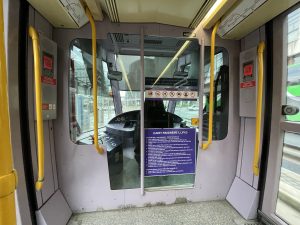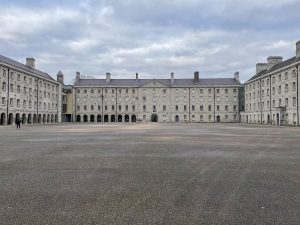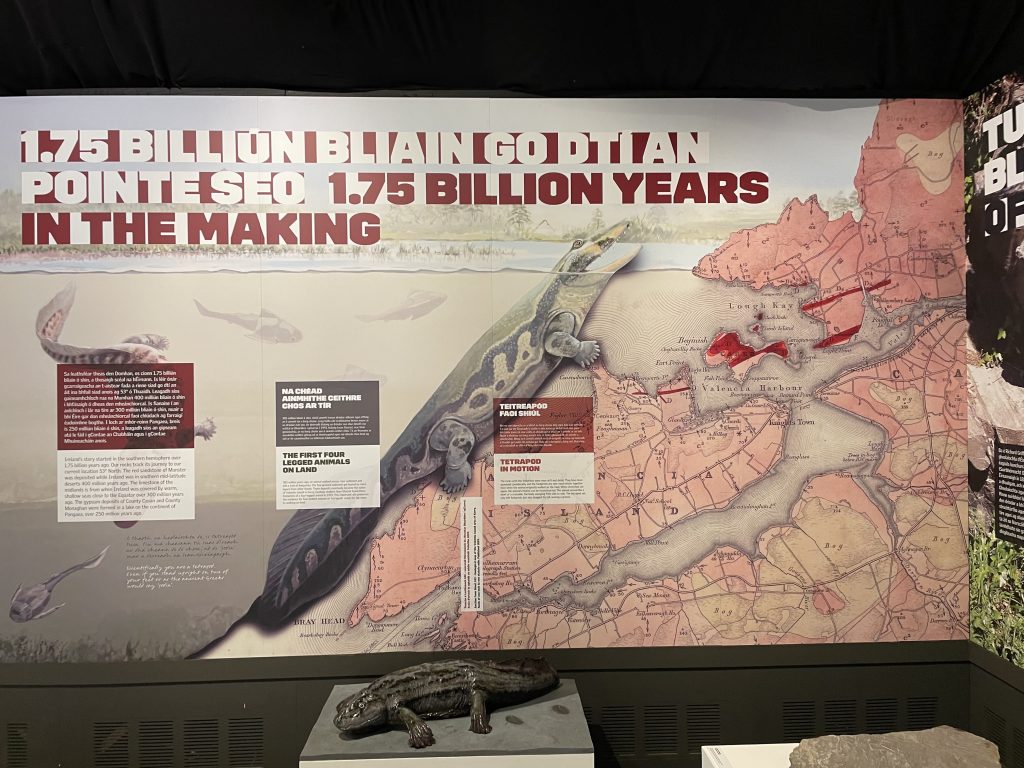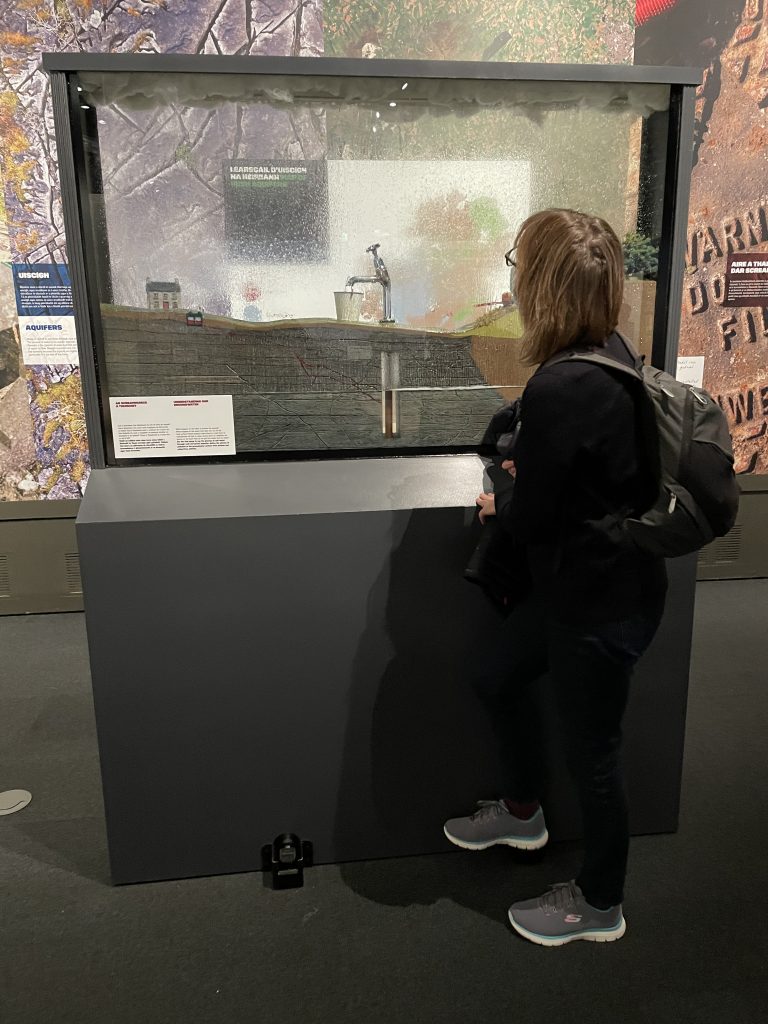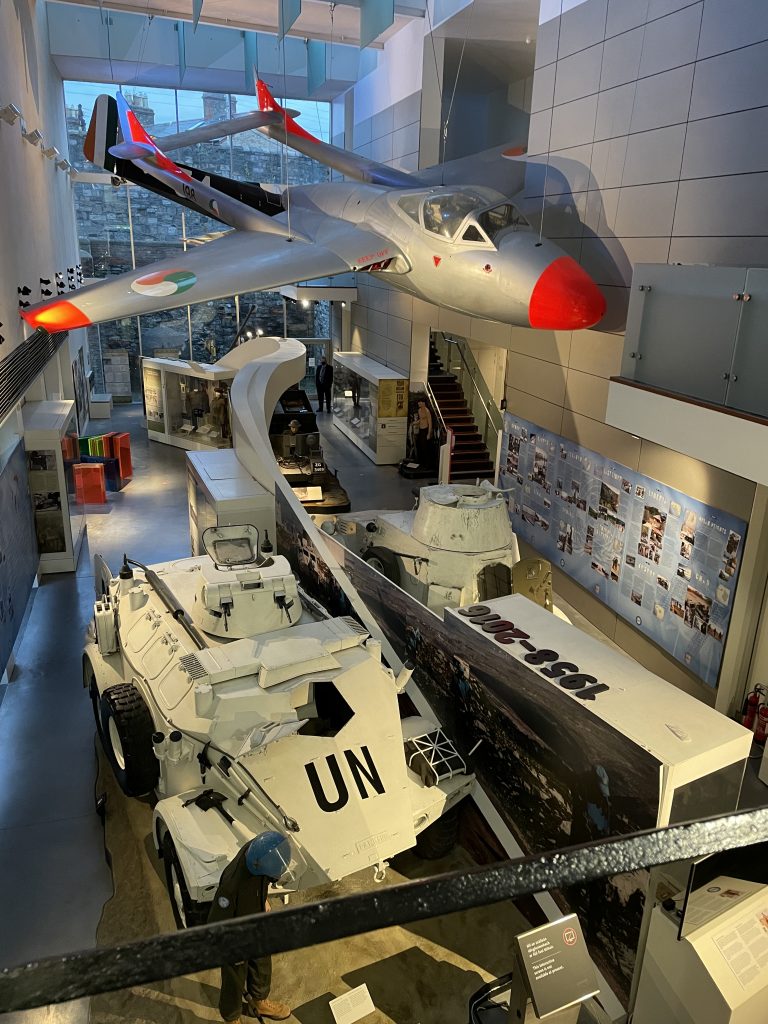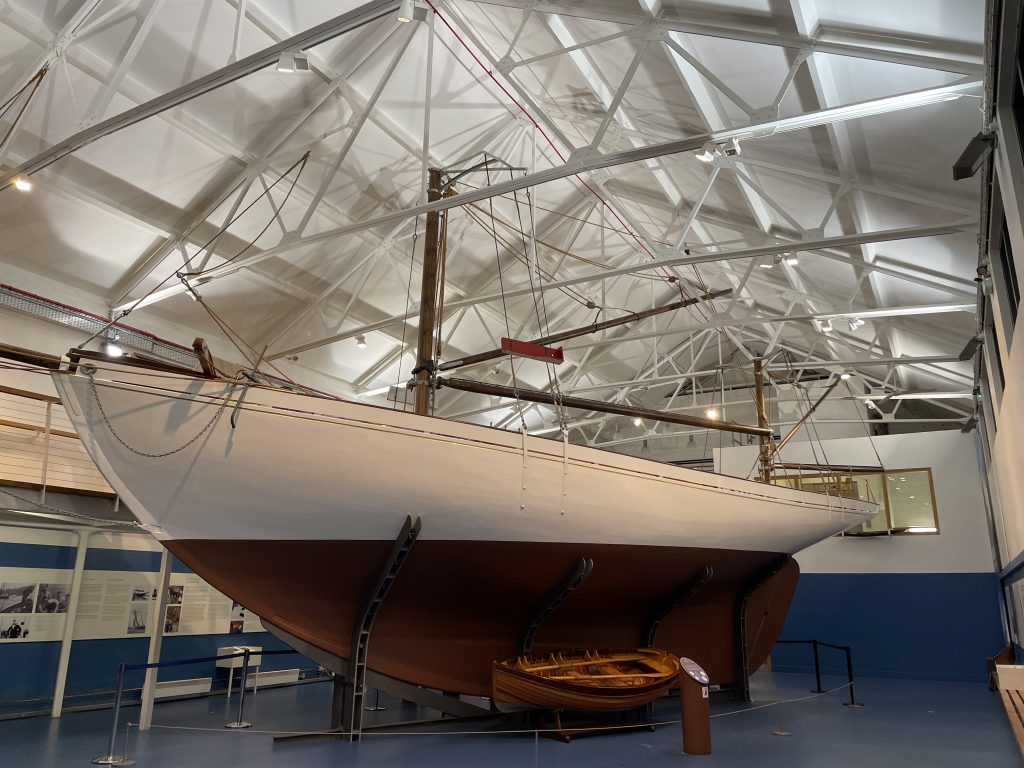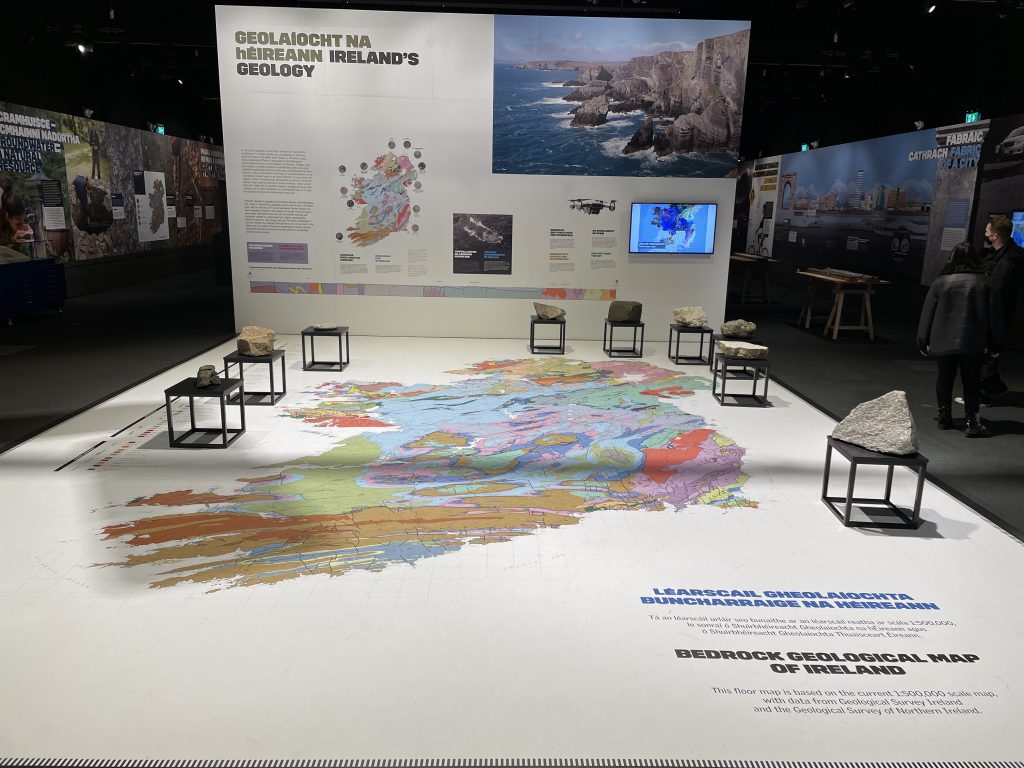Ireland day 0109. Saturday 15 January 2022- Geology
Commentary
Museums, museums, museums – that’s been the story of our lives over the last week or so. And even though I’d promised my grey cells a bit of a rest after yesterday, we simply couldn’t resist the temptation of adding another one to the tally today.
Our destination of choice was the snappily-named “National Museum of Ireland – Decorative Arts and History”. Arts and history are not really my thing (though might not have guessed it from my recent ramblings on these subjects) – but today there was an added enticement because this particular museum had laid on a special exhibition “Down to Earth – Exploring Ireland’s Geology”. I thought that sounded distinctly more interesting (and persuaded Val that she thought so too) so as soon as lunches were packed and the Thermos was filled (of course), we got on the train again and beat the well worn path to Connolly station.
Normally, we travel around Dublin on foot as it’s a relatively compact city centre, and you see more that way. But today, because we were running a bit late, we decided to take the red line tram, known as “Luas” (from the Irish for “Speed”) half a dozen stops up the line to the Collins Barracks, the home of the Decorative Arts museum. It’s a speedy and efficient means of transport, and because we had paid for our journey into Connolly station on our LEAP cards, had the benefit of being free.
The Collins Barracks is an impressive edifice, built in 1702 to house British forces. After independence, it was taken over by the Irish army and renamed after Michael Collins when he was assassinated in 1922. As part of Ireland’s programme of demilitarisation, it was decommissioned in 1997 and converted into museum premises. It is the oldest continually occupied barracks in the world and is today a quiet, tranquil place, with a huge parade ground in the middle. The museum surrounds it on all four sides.
Anyway, on to the geology exhibition. It was a compact, well laid-out display but if you had gone expecting to learn about the geological history of Ireland (as, I admit, I had) you would be a bit disappointed. There was indeed a little on the geological record (and if you thought the battle of Clontarf was a mind-bendingly long time again, then you need to think again when it comes to geological timetables).
I learned that Ireland’s oldest rocks in fact originated 1.75 billion years ago in the southern hemisphere and slowly migrated north as the Iapetus ocean opened then closed. Parts of modern Ireland were once thousands of kilometers apart and were pushed together when the Iapetus ocean closed. The suture line runs roughly through Clogher Head, near Termonfeckin (ah, our old friend). During the intervening billion years or so, extensive tectonic activity, erosion and metamorphism combined to result in the exceptionally complicated geological landscape we see today.
But the rest of the display was dedicated to the history of geological exploration in Ireland, which began as long ago as the early 1800s. In fact for a while, Ireland’s geology was among the best mapped and best understood in the world. It focused on the historic and current activities of the Geological Survey of Ireland, and on some of the recent mining and quarrying activities across the country. Did you know, for example, that Ireland is Europe’s producer of Zinc? Most of it comes from the Tara mine in Navan, which is not far up the road from here in Malahide. In fact every morning at about 10:30 the ore train comes rumbling past our bedroom window, on its way from Navan to the port at North Wall. It’s usually hauled by one of the magnificent Type 71’s, by the way. There was also an extensive exhibition on the Tellus soil geochemistry and airborne geophysical survey, which I understand from those who have used it to be “outstandingly good”.
Well, that’s enough on geology – what about the rest of the museum? I have to be honest, I thought the best bit about the museum was the building it’s housed in. As it’s laid out on three floors on all four sides of the parade ground, it’s pretty labyrinthine. Each time you think you’ve finished, you find another corridor heading off into a new gallery, or an unexplored set of steps. The contents were well presented – ranging from furniture, to historic clothing, to modern armaments. But I think I am a getting bit museum-ed-out, or at least in need of a major CPU upgrade, so I didn’t really have the inclination to study it all in depth and take in everything properly.
I found the military history section more interesting – particularly as it had a slightly more overt anti-British feel to it than most of the exhibitions we’ve visited lately. Or maybe it was just me being a bit supersensitive. Anyway I was fascinated to learn that Ireland does in fact still have a military presence – known as the Defence Forces Ireland, or Óglaigh na hÉireann. It comprises a small army, air force and navy and historically is descended from the Irish Volunteers were central to the Easter Rising in 1916 (think back to the post office). But given Ireland’s policy of neutrality, its main functions today are around coastguarding, civil order and participation in UN peacekeeping forces.
Well that’s turned out to be a far longer and more complicated discourse than I had intended. Geology and military history don’t normally make for comfortable bedfellows, so I do hope it hasn’t been too difficult to follow. Soon, I really will deliver on my promise to write a much simpler blog. Maybe tomorrow.
Today’s photos (click to enlarge)



